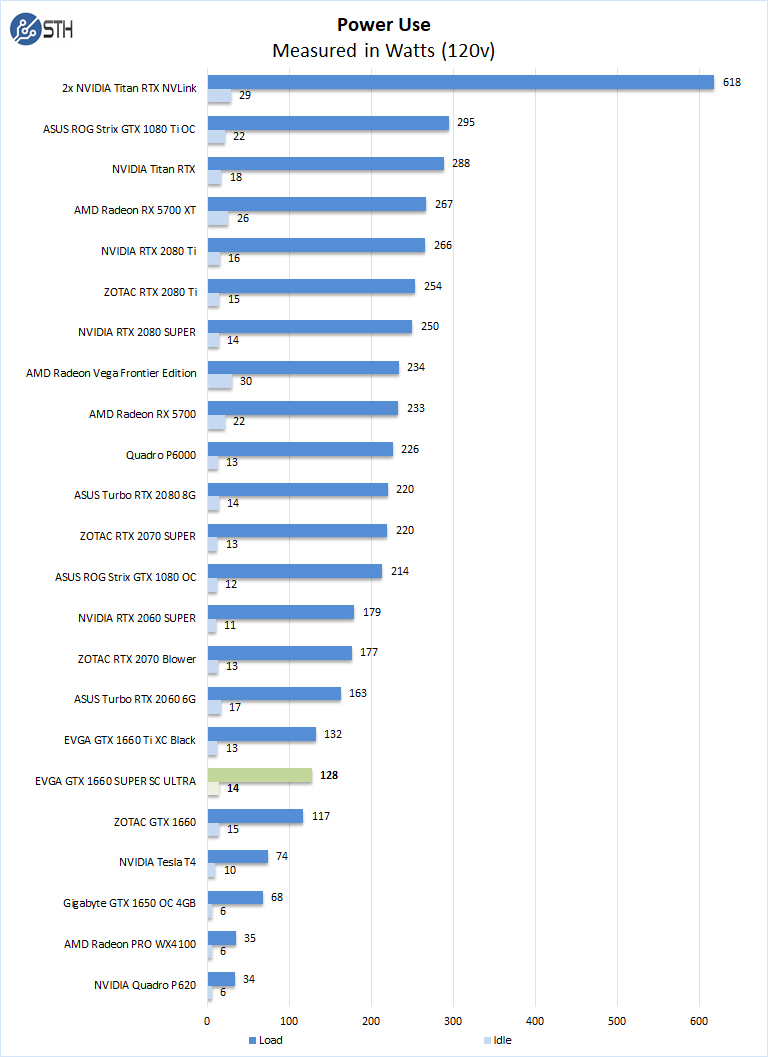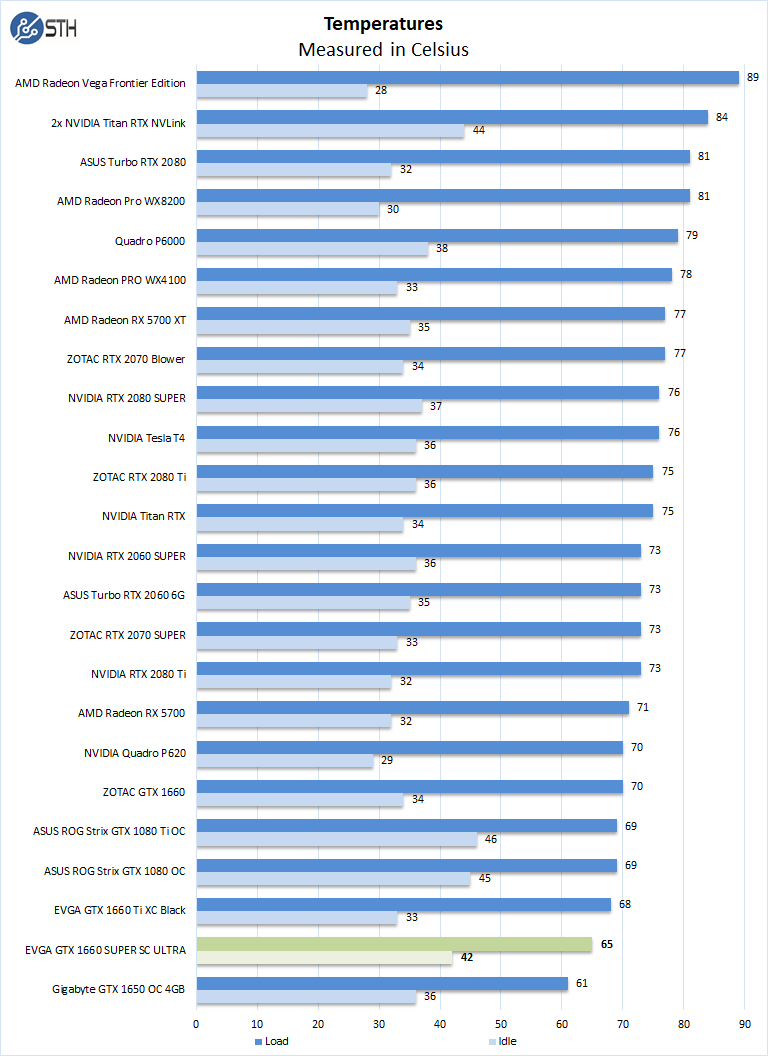Power Tests
For our power testing, we used AIDA64 to stress the EVGA GeForce GTX 1660 SUPER SC ULTRA, then HWiNFO to monitor power use and temperatures.

After the stress test has ramped up the GeForce GTX 1660 Super SC Ultra, we see it tops out at 128 watts under full load and 14 watts at idle. This power consumption compared to the Tesla T4 and GTX 1650 shows why it requires an additional power cable and those cards do not.
Cooling Performance
A key reason that we started this series was to answer the cooling question. Blower-style coolers have different capabilities than some of the large dual and triple fan gaming cards. In the case of the GTX 1660 SUPER SC Ultra which uses dual fans, some exhaust will exit the chassis out of the rear, but most will remain cycled in the chassis.

Temperatures for the EVGA GeForce GTX 1660 Super SC Ultra run in a temperature range equal to other cards in this class. This chart is fairly self-explanatory.
Final Words
If we had to describe an evolutionary, rather than revolutionary upgrade, this is it. It is basically the same GPU as the outgoing GeForce GTX 1660 but with newer, faster, GDDR6 memory. Street pricing seems to be about the same, so we are supportive of this upgrade.
At some point, we wish NVIDIA would drop GTX and upgrade the 1660 line to RTX. NVIDIA’s new ray-tracing products have been out for over a year, so it is time to push the feature harder.
If you can spend more, upgrading to the GeForce RTX 2060 Super is completely worth it with more features, compute power, and memory capacity. Still, if you are on a limited budget, the GTX 1660 Super is a great upgrade, especially for memory-intensive tasks and EVGA did a great job with this card.




Being a “compute card” isn’t an excuse of putting DVI-D port into it. It should be common to have 3x DisplayPort and 1x HDMI.
@Bull
Lots of 144Hz gaming monitors sold a few years back used an out-of-spec DVI-D input that requires more power than a USB-powered Displayport to Dual-Link adapter can provide.